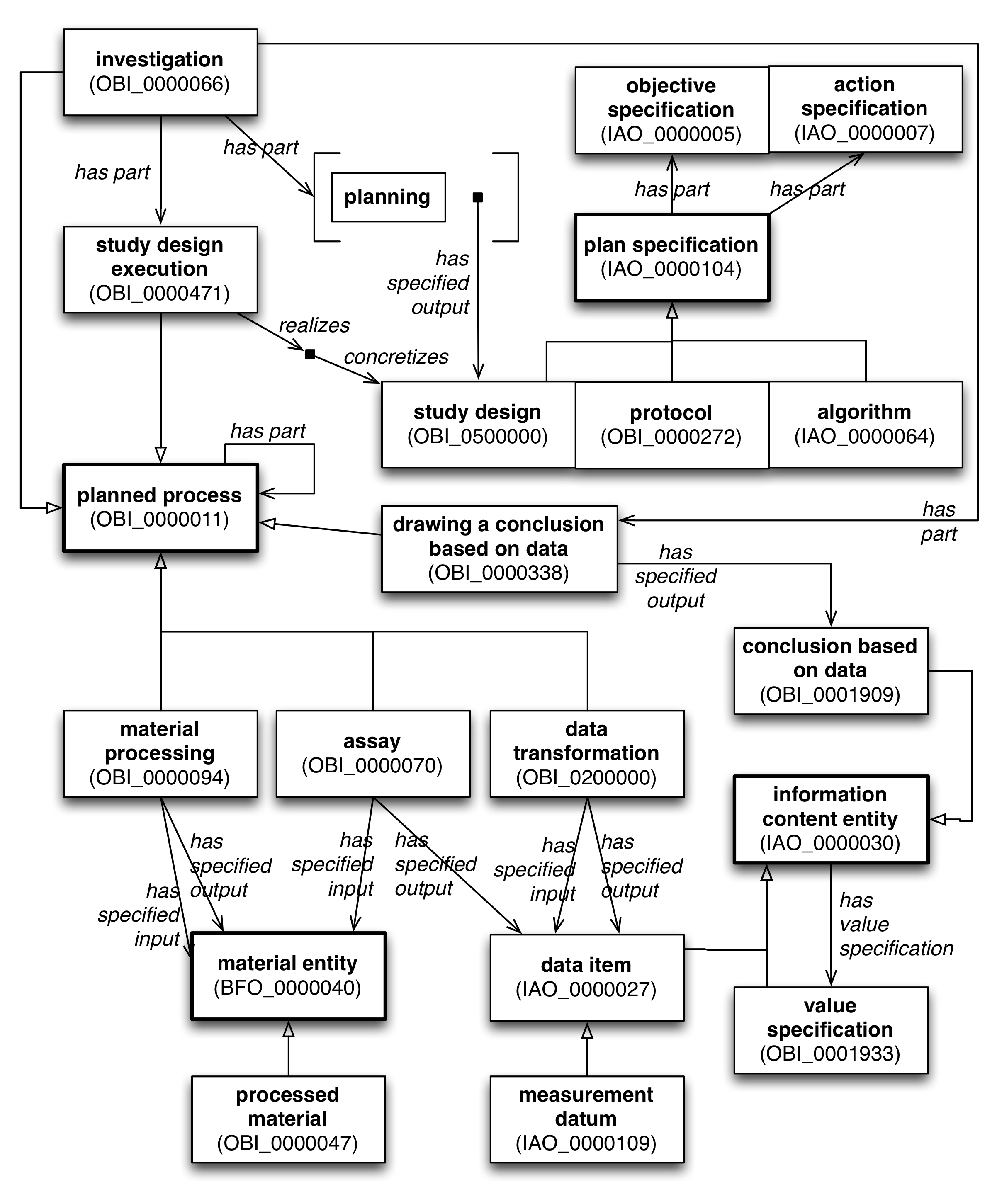-
Notifications
You must be signed in to change notification settings - Fork 26
Core Classes
The top-level organization of the main classes of the ontology is laid out in the following figure:
This is conformant to the Basic Formal Ontology (BFO) upper ontology and provides a basic model for how we attempt to structure our theoretical description of experimental methodology. The key to using OBI to generate linked data that describe experiments (at least in terms of the organization of their protocols) is illustrated in the following figure:

Although this view is quite complicated, much of the design of OBI revolves round four classes: (A) planned process
(B) plan specification, (C) material entity, and (D) information content entity.
It is key that any planned process can specify substructure through the has part object property. Thus an investigation is the highest level entity of interest to us, and is linked to a study design execution that may then be made up of individuals made from three classes of processes that are used in scientific protocols: material processing, assay, and information content entity. We then use the has specified input and has specified output object properties to link these processes to either material entity or data item objects to describe a complete experimental scientific protocol. The actual values of data elements in OBI are provided by instances of the value specification class. We may also specify the conclusions of a study through the drawing a conclusion based on data process which generates a conclusion based on data. Clearly, there are additional semantics that must be invoked to instantiate these models for real data, but these core classes provide the basic structure for such descriptions.
An example of the use of this architecture to specify a protocol in the molecular biology space will be forthcoming below.